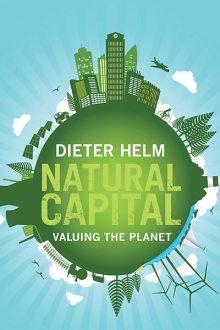Dieter Helm—
The trouble with strong sustainability is that it contains very little by way of guidance as to what we should do, except ‘preserve everything’. It is in essence the claim that natural capital should be regarded as non-substitutable, and hence, following Eric Neumayer, strong sustainability can be called the ‘non-substitutability paradigm’. It does not need to differentiate between classes of assets, and it does not recognize technical change. But, while there is obviously only one earth (unless we find other habitable planets), its productivity is a function of science and technology. Much more can be exploited from natural capital now than in Malthus’s time. The planet may be fixed, but its yield is not. Human history has been all about finding new ways to expand that yield.
Strong sustainability is also extremely rigid. In prohibiting damage it radically curtails many of the things we do in modern economies. It rules out substitutions between natural capital and other factors of production, and hence it is against almost all economic development. The rise of China’s economy has many features that are objectionable from an environmental perspective, but it is hard to conclude that all of it is undesirable, unless a pitiless Malthusian logic is applied to keeping China’s poor in the state Mao left them in the 1970s after the Great Famine and the Cultural Revolution (and the estimated 70 million deaths that resulted).
Advocates of this sort of strong sustainability are inevitably against development, and they find themselves on the front line in opposing most of what goes on in modern economies. In this sense, they are fundamentalists. To add to their conventional bugbears, such as nuclear power, they are now against fracking and genetically modified (GM) crops. Yet what they are reluctant to spell out is that their projected world is one in which standards of living are much lower than current levels, at least in the developed countries. It is not just that consumption is for them too high, something that many holding very different views agree upon, but that it needs to be permanently and radically reduced. We would need to go ‘back to nature’, to live in a state of ‘harmony’ with the natural world.
It is perhaps not surprising that many political Greens want to return to wind, solar and local biomass sources of power in addressing climate change – sources of energy familiar in our pre-industrial past. The British Green Party manifesto for the 2015 general election is against nuclear power, fracking, and is to the left of the Labour Party in advocating both a wealth tax and a steep rise in the minimum wage. The strong sustainability position is against the very idea of economic growth. Indeed it is an argument for negative growth if population is rising. Zero growth would be acceptable after there has been a rebasing to a lower consumption level only if associated with population control – something Hardin, the Club of Rome, Ehrlich and others advocated.
In contrast, weak sustainability allows some environmental assets to be substituted by man-made and human capital. Nature is not sacrosanct according to this view. Human history, as a process of creating our man-made and human capital, has not been an unmitigated mistake, though the substitution may have gone too far. In its pragmatic form, weak sustainability can be summarized as the view that although the three types of capital – man-made, human and natural – are not perfect substitutes, the degree of substitution is not zero. Weak sustainability is necessarily empirical: some substitutions do little damage; others are to be avoided.
But which substitutions are acceptable? To sort this out, further distinction is needed between renewables and non-renewables. Recall that not all natural capital is the same. Renewables are just that: they renew themselves at no cost to us. Fish can reproduce and make good the depletion caused by predation. Trees grow and replace those that have been cut down. Non-renewables, by contrast, are assets that can be used only once. They do not regenerate. Minerals, such as fossil fuels, are like this: if North Sea oil is used up now, there will be none left for future generations.
From Natural Capital: Valuing the Planet by Dieter Helm, published by Yale University Press in 2016. Reproduced by permission.
Dieter Helm is Fellow in Economics, New College, Oxford. He is also Professor of Energy Policy and Professorial Research Fellow, Smith School of Enterprise and the Environment, University of Oxford. He lives in Oxfordshire, UK.
Further Reading:



 Deobandism, Islam and the Religious Narratives of the Taliban
Deobandism, Islam and the Religious Narratives of the Taliban